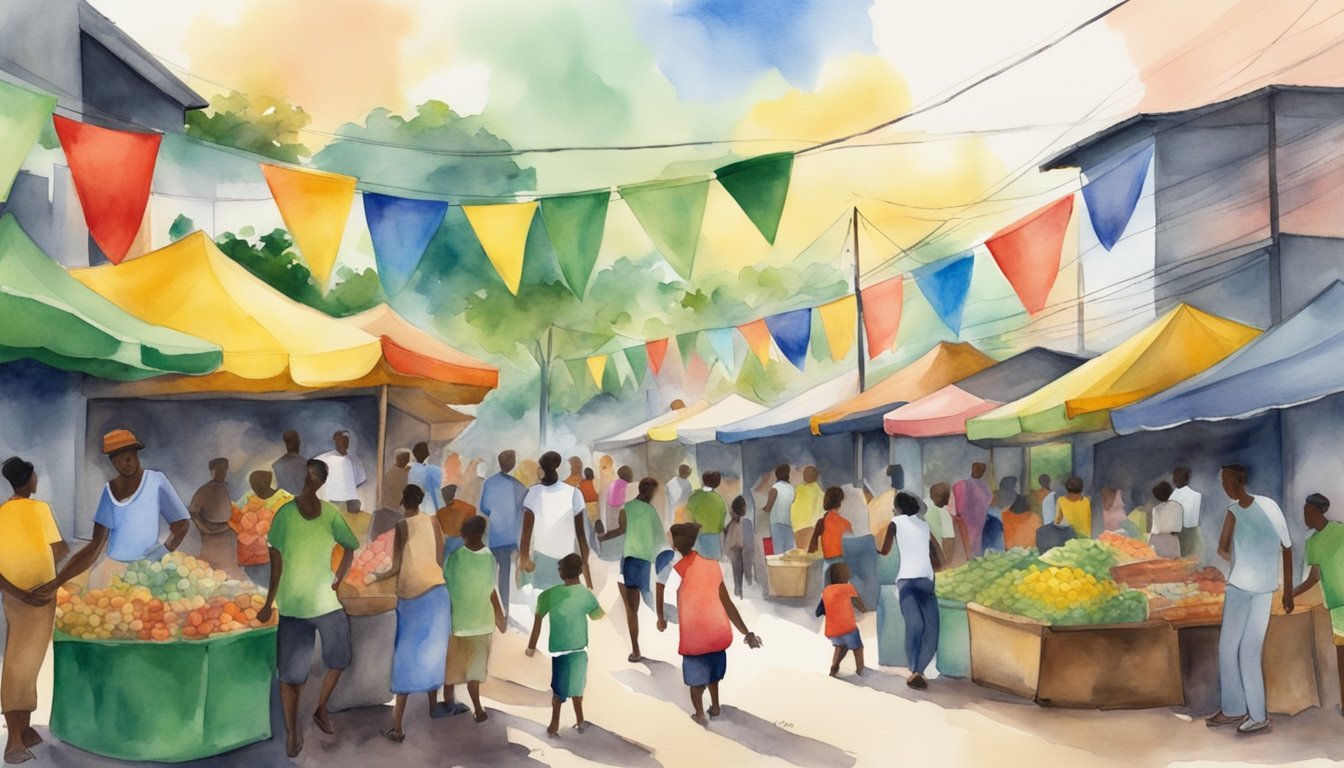Geographical Location and Physical Features
Jamaica is a prominent country within the Caribbean, notably positioned near Cuba and Hispaniola. This section uncovers its exact location in the Caribbean and explores the significant physical features that shape its landscape.
Position in the Caribbean
Jamaica is a part of the Greater Antilles archipelago in the Caribbean Sea, which positions it south of Cuba and west of Hispaniola, the island comprising the nations of Haiti and the Dominican Republic. As the third-largest island in the Caribbean, Jamaica forms a part of the West Indies and serves as a bridge between North America and South America in the Western Hemisphere.
Major Mountains and Landforms
The island’s physical geography is marked by an array of mountain ranges and landforms. The Blue Mountains, which include the famed Blue Mountain Peak reaching an elevation of 7,402 feet, are the highest on the island and a crucial contributor to its rugged landscape. Jamaica’s geography is also characterized by limestone features such as the cockpit country, a region with steep-sided hillocks and deep closed valleys. Montego Bay on the north coast is backed by the Dry Harbour Mountains, while in the southwest, the terrain includes the wetlands near Morant Cays and the Black River Lower Morass.
The island’s karst topography is replete with numerous caves and sinkholes. River systems such as the Black River and the Rio Minho cut through the country, with streams and rivers often carving deep channels into the limestone, leading to significant erosion and the creation of unique geological features. Jamaica’s coastal plains and the interior limestone plateau present varied landscapes that transition from the mountainous regions to the smooth coastal areas, supporting both agricultural activities and natural habitats.
Is Jamaica in Close Geographic Relation to Turkey’s Continent?
Jamaica, situated in the Caribbean, is quite distant from Turkey, which is mainly located at the crossroads of Europe and Asia. To understand this relationship better, one might wonder, “where is turkey located geographically?” This inquiry highlights the vast separation between these two unique cultural regions.
Cultural and Political Aspects

Jamaica’s cultural and political landscapes are deeply interwoven with its history of European colonization, African heritage, and its status as a Commonwealth realm. The nation’s governance structures, social identity, and economic pursuits provide a rich tapestry of what it means to be Jamaican.
Government and Political Structure
Jamaica operates under a constitutional monarchy with a parliamentary system of government. The British Monarch, currently King Charles III, serves as the head of state and is represented locally by a Governor-General. The Prime Minister, the head of government, works in coordination with the bicameral Parliament, consisting of an appointed Senate and an elected House of Representatives. Jamaica’s political system draws from the Westminster model, a legacy of British rule.
Population and Cultural Identity
Jamaica’s population is predominantly of African descent, a lasting imprint of the transatlantic slave trade. Cultural influences also include those from East Indian and European lineages, enriching the nation’s identity with a diverse patchwork of customs and traditions. The capital, Kingston, is not only the largest city but also the cultural heartbeat, providing a snapshot of the country’s motto, “Out of Many, One People.” Rastafarianism, a religion and social movement that emerged in Jamaica, significantly contributes to the global cultural recognition of the island.
Economic Activities and Tourism
Agriculture remains a significant sector, with commodities like sugar, yams, and coffee being important for the local economy. However, tourism is the powerhouse of Jamaica’s economic activities, benefiting from the island’s picturesque beaches, favorable climate, and vibrant culture. Notably known as the “Land of Wood and Water,” Jamaica continues to attract tourists with its unique offerings of music, cuisine, and rum.

